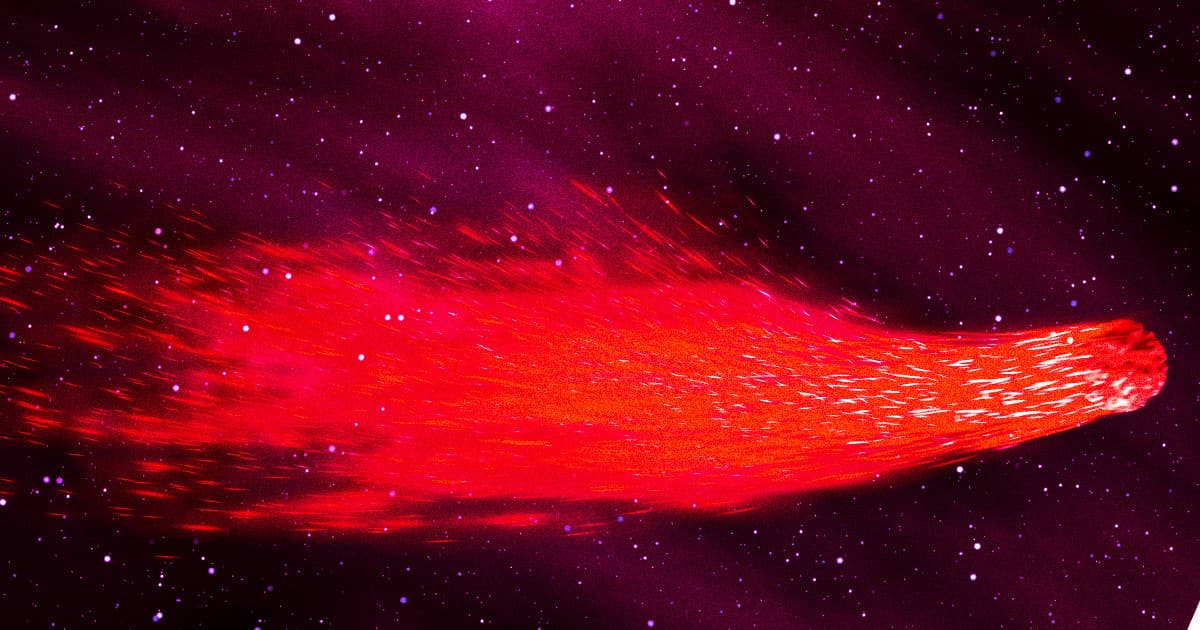Currently visible in the night sky.
Handsome Devil
A huge, volatile space object called the "devil comet" is flying its way past Earth for the first time since 1954 — and is currently visible in the night sky.
Officially named 12P/Pons-Brookes, the periodically exploding comet earned its infernal moniker for the "horns" it sprouted after a recent eruption left it with a pair of distinctly shaped tails of gas and ice spewing into space.
Now, new images of the devil comet reveal a feature no one had ever noticed before: a spiral of gas raging in the comet's core.
The images were captured by Norwegian astrophotographer Jan Erik Vallestad on March 9. As reported by SpaceWeather, the spiral wasn't easily visible until Vallestad carefully processed the images, which thankfully were taken at just the right settings.
"The image has been processed in Pixinsight with moderate stretching to reveal structure in the core," he told SpaceWeather. "This is doable because the core itself was not 'blown out' (saturated) in my original data."
Mystic Spiral
Comets are typically composed of ice, rock and dust. They gain their distinctive luminous halo from orbiting the Sun, which heats up these icy bodies so that they spew luminous gases into the void. As they continue their orbit, the trailing gases form a large tail that can stretch for millions of miles.
12P/Pons-Brookes is slightly unique in that it is believed to be cryovolcanic, regularly erupting as plumes of its pressurized, frozen interior bursts through fissures on its surface.
As the comet spins, these exhausts of cold gas could be swirling together to form the apparent spiral at the comet's center.
Sun and Comet Align
Thankfully, you don't need to be an astronomy wizard to witness this comet's rare visit. Right now, those in the northern hemisphere can see it with simple binoculars or a telescope near the Pisces constellation. By next month, 12P/Pons-Brookes should be visible to the naked eye.
There are two notable dates to keep in mind. According to NASA, there's a good chance the comet will be visible during the total eclipse on April 8 — a rare and unusual cosmic coincidence. And on April 21, the comet will reach perihelion, when it will be at its closest point to the Sun and be at its brightest.
So mark your calendars and keep your eyes peeled, folks: with the devil's luck, we'll get to see a comet and a full-blown eclipse at the same time.
More on space: Star Explosion Will Be Visible in Night Sky, Astronomers Say
Share This Article
